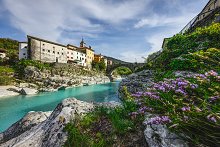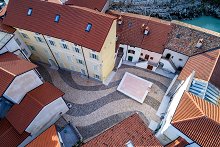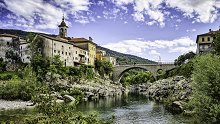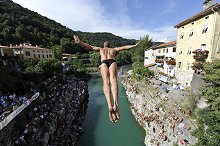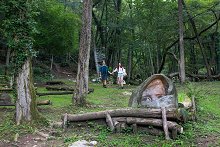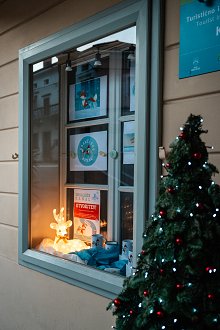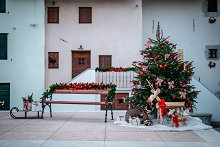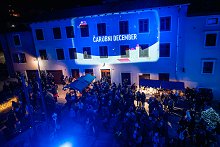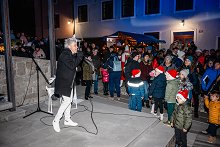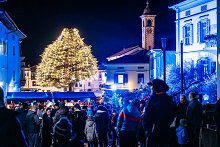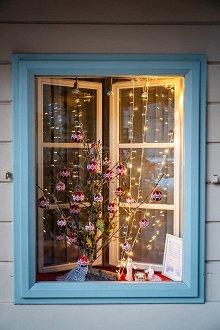The Gothic House
The oldest house on Kontrada is the so-called Gothic House. It is named after the preserved Late Gothic stone portal on the ground floor but it is possible that the portal and windows on the upper floor are even older. The house forms part of the north - western defence tower, and the upper portal likely served as the original entrance to the tower. Over time, individual residential buildings leaned against the western side of the wall and the area between the towers. These buildings were built in different periods, from the Late Middle Ages to the 19th century, and it was in this manner that Fiščeva and Kolarjeva House were built as well. During the Baroque period, the square was divided into the eastern and western part. Both parts were separated by a Baroque palace with two arched passageways, which lead towards the wall. The 1822 Franciscan Cadastre reveals that the owner of the palace, the entire defence complex with two towers and the courtyard was Count Felice Campignano. The northeastern tower housed prisons, while the Fiščeva House was home to shoemaker Anton Bucik. His neighbour was cooper Michael Baloh. During that time, a new series of houses was built. They closed off the square to the south and continued along the church’s presbytery. The course of construction and the preserved tower in one of the houses indicate the existence of a fortified church wall. With the demolition of the Baroque palace, a larger square arose in Kontrada, surrounded by a row of buildings to the west and smaller, triangular settlement to the east. The houses were leaned against church wall and the settlement wall.
(Text: Jasna Svetina ZVKD Nova Gorica)






Foto: Damijan Simčič, Primož Kožuh
